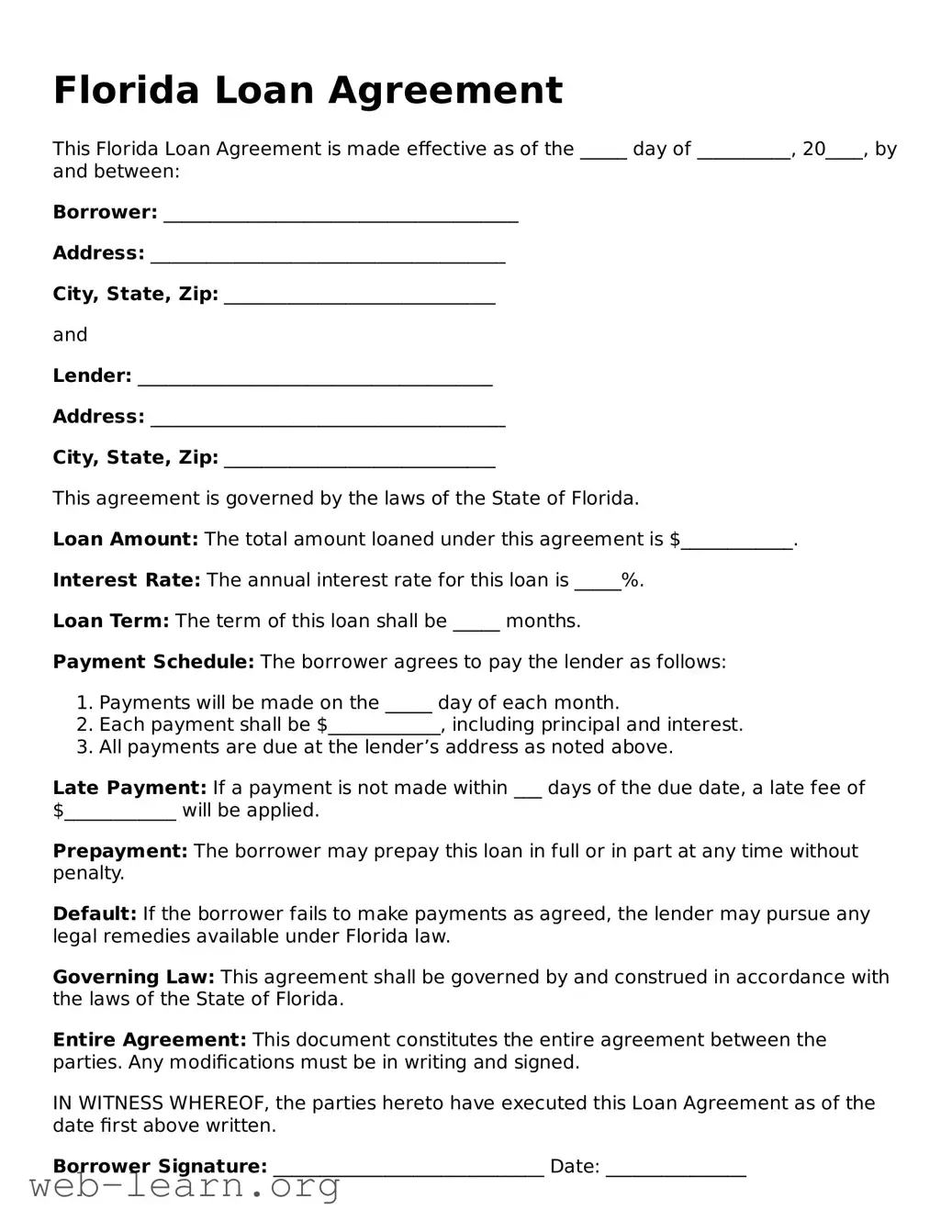Florida Loan Agreement
This Florida Loan Agreement is made effective as of the _____ day of __________, 20____, by and between:
Borrower: ______________________________________
Address: ______________________________________
City, State, Zip: _____________________________
and
Lender: ______________________________________
Address: ______________________________________
City, State, Zip: _____________________________
This agreement is governed by the laws of the State of Florida.
Loan Amount: The total amount loaned under this agreement is $____________.
Interest Rate: The annual interest rate for this loan is _____%.
Loan Term: The term of this loan shall be _____ months.
Payment Schedule: The borrower agrees to pay the lender as follows:
- Payments will be made on the _____ day of each month.
- Each payment shall be $____________, including principal and interest.
- All payments are due at the lender’s address as noted above.
Late Payment: If a payment is not made within ___ days of the due date, a late fee of $____________ will be applied.
Prepayment: The borrower may prepay this loan in full or in part at any time without penalty.
Default: If the borrower fails to make payments as agreed, the lender may pursue any legal remedies available under Florida law.
Governing Law: This agreement shall be governed by and construed in accordance with the laws of the State of Florida.
Entire Agreement: This document constitutes the entire agreement between the parties. Any modifications must be in writing and signed.
IN WITNESS WHEREOF, the parties hereto have executed this Loan Agreement as of the date first above written.
Borrower Signature: _____________________________ Date: _______________
Lender Signature: _____________________________ Date: _______________
